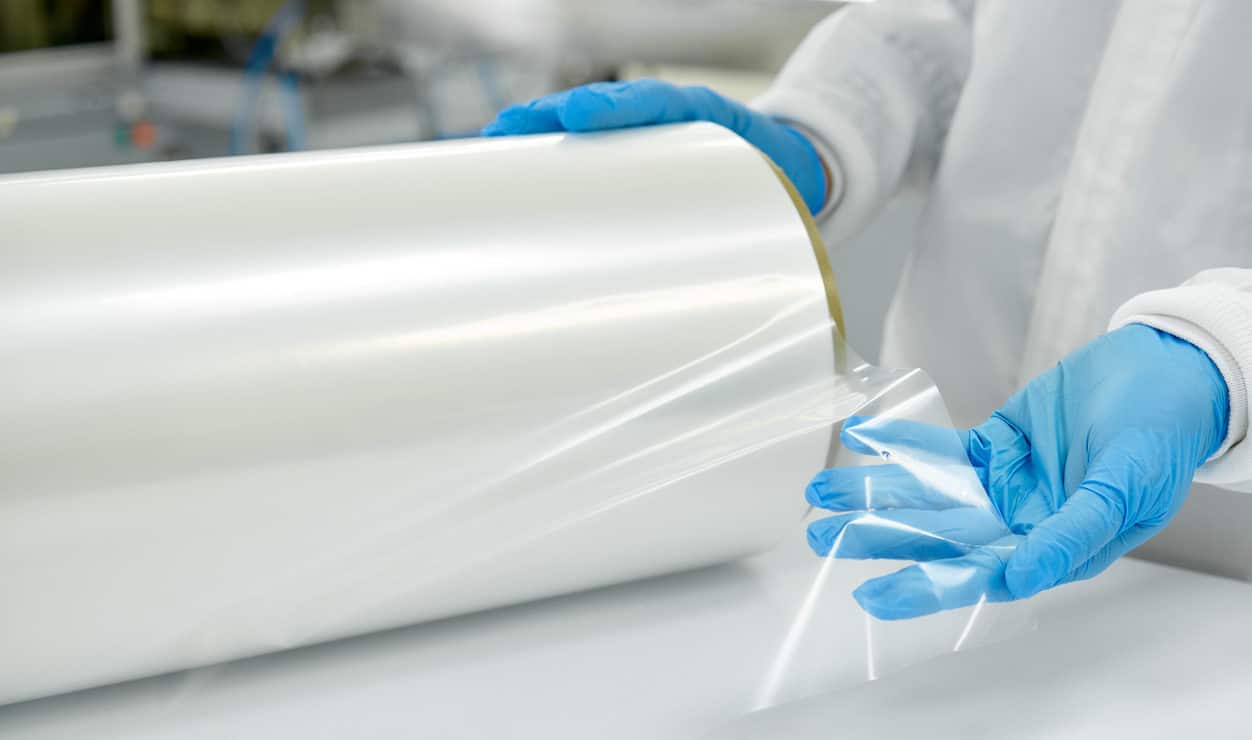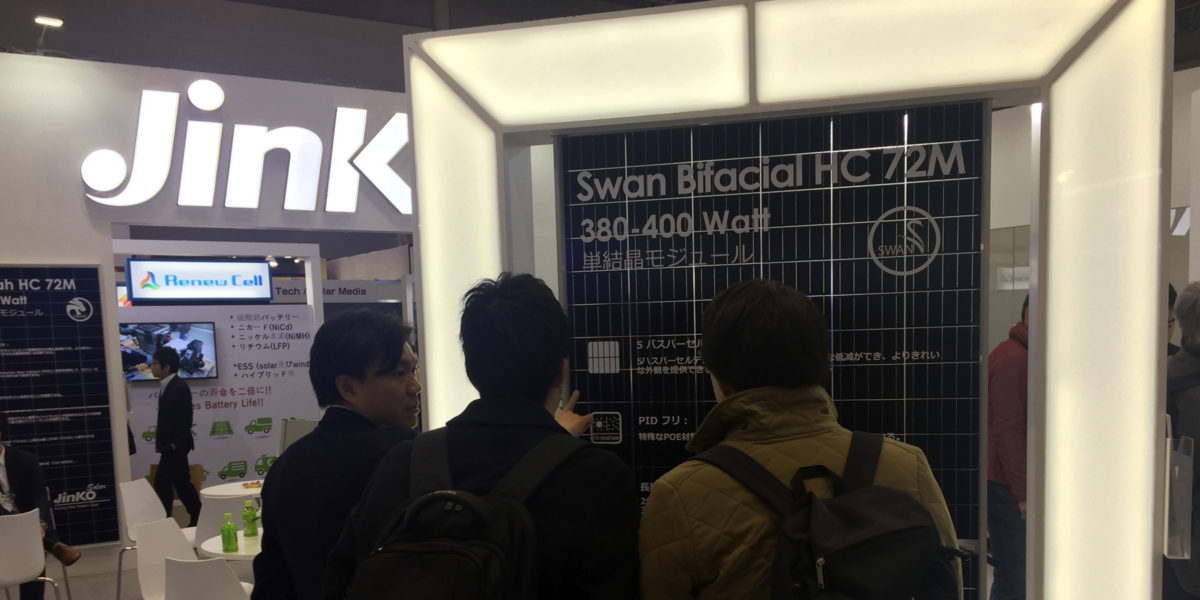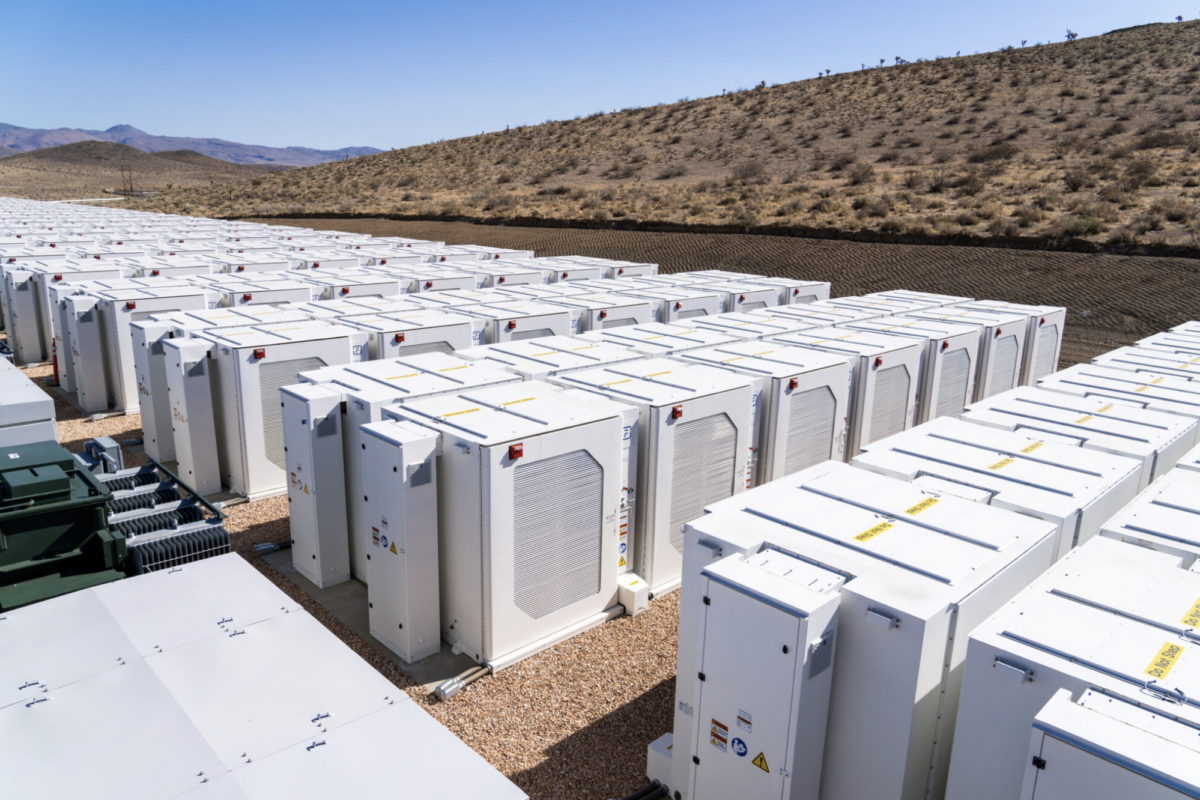From pv magazine USA.
A question begins to arise, if the cost of a clear bifacial solar panel is the same as that of a standard module, what is the best backsheet? Sanyo solar cells have long benefited from an opaque white backsheet feeding photons into the back side of their bifacial solar cells, and in the current module market we often see a 5 W bump from the white backsheet versus the more aesthetically pleasing black versions. How much does that equate to across the rooftops of the world?
Chinese module maker Jinko Solar and U.S. multinational DuPont have announced a 400 W ‘Swan’ bifacial solar module. The product is based on Jinko’s ‘Cheetah’ solar cell line, with a clear version of DuPont’s Tedlar PVF backsheet film. The module has standard aluminum framing and its makers say it can offer as much as 20% more electricity generation than monofacial products, in optimal conditions.
The companies suggest using a clear backsheet will bring similar electricity generation gains as a standard glass-on-glass bifacial module. However, the levelized cost of electricity produced by the panels is projected to be lower due to the new product fitting within already standardized aluminum-framed installation processes. That means lower labor costs, due to the lower weight of frames and without needing a second piece of glass on the back of the panel.

The warranty of the clear backsheet product matches that of standard backsheet products. Jinko and DuPont have been working together since at least 2015, with DuPont the sole backsheet supplier to its Chinese partner.
It is clear DuPont’s backsheet business stands to lose a lot if solar modules shift to glass-on-glass structure, and the partners are definitely aiming to persuade the market double glass is not a done deal.
There is the possibility a product like this could make bifacial modules appropriate in all settings, instead of just in situations with highly refined installation design parameters – taking into account surface albedo, row to row spacing, tilt, clearance, undergrowth, location, sky diffusion – that Jinko Solar suggests are currently needed to maximize bifacial reflection.

Those variables drive the greatest gains from a solar power system and the most methodical project developers will maximize them. However, if the bifacial-with-backsheet process matches the prices and installation techniques associated with monofacial products, it could open new doors.
For instance, aesthetics drive customer demand for black cells on a black backsheet with a black frame – products that cost more but have lower efficiency. How will consumers react to a black frame around black cells but with a sprinkling of the natural color of their roof peeking through, rather than the black backsheet?
Commercial customers won't care. If any efficiency benefit comes from bifacial-with-backsheet panels in non-optimized installation conditions – tight against the roof, 5-15 degree angles, very tight installation rows – they could become the standard choice. In fact, that would add real value on top of white rooftops that are common in commercial settings.
Answers to such questions will come as engineers and developers at the largest installation shops get extended data from deployed projects and, with this product being offered by DuPont, expect it to be a simple test without much risk.
This content is protected by copyright and may not be reused. If you want to cooperate with us and would like to reuse some of our content, please contact: editors@pv-magazine.com.



Any one have the cost difference in $/watt for bifacial modules vs single faced? Glass-glass vs reflective backsheets?
I would like to see a setup where you would mount the panel 90 degrees in north to south axis, where the panel is facing due east and west! How much power will it make throughout the day from dawn to dusk???
what is the value of (U VALUE w/m2k) for this type of module if we want to use it for skylight .